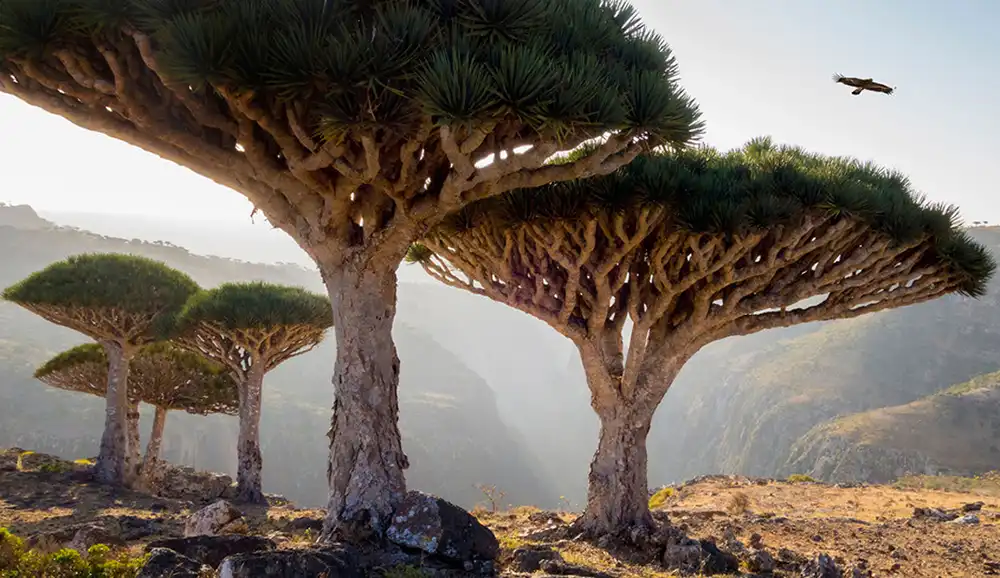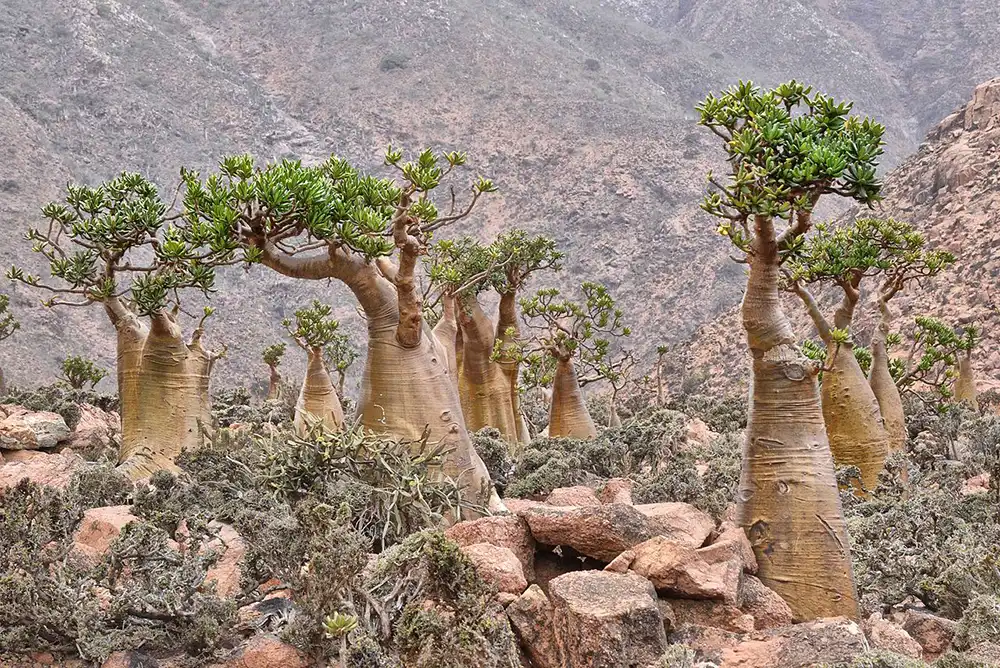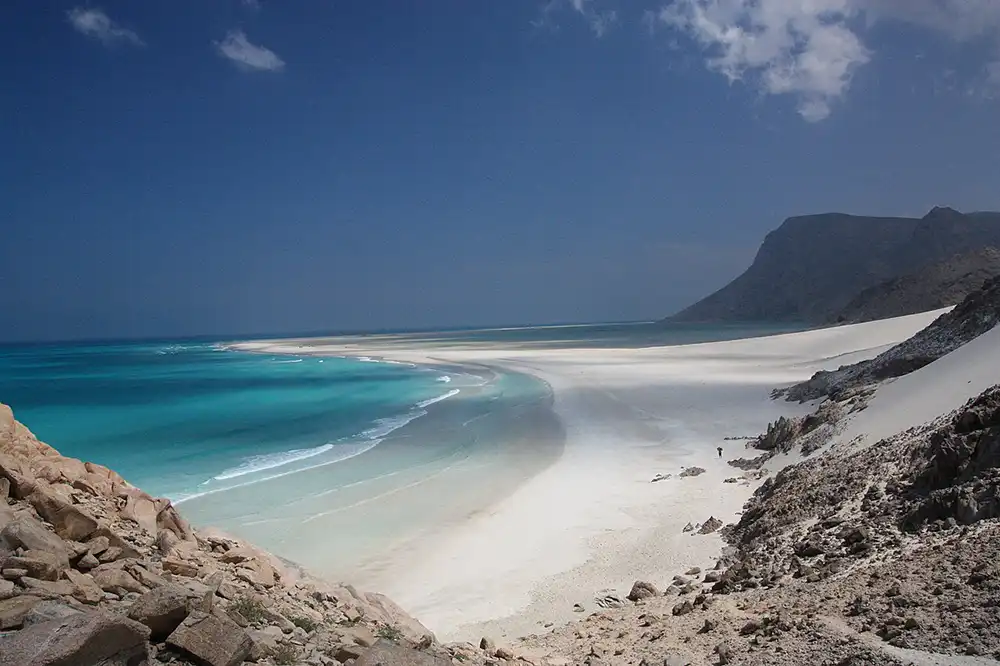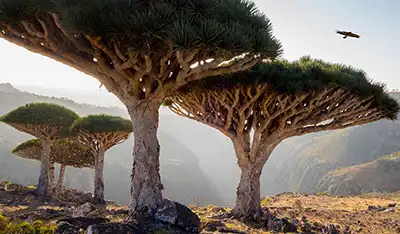Imagine a place on Earth that seems to have been teleported from another planet. A landscape where trees look like inverted umbrellas or giant mushrooms, where rock formations defy gravity, and wildlife is so peculiar it barely seems real. This place isn’t a literary fantasy or a film set for a sci-fi epic; it exists, and its name is Socotra.
Located in the Indian Ocean, approximately 350 kilometers off the coast of Yemen, Socotra is an archipelago of four islands that has remained isolated for millennia. This distance from the mainland has been its greatest protector, allowing nature to evolve in such extraordinary ways that today Socotra is considered one of the most unique biodiversity hotspots on the planet. The main island, Socotra, is the crown jewel of this ecosystem.
Upon disembarking there, the first impression is one of being in a primitive world. The landscapes are dominated by plant species found nowhere else on Earth, known as endemic species. The most iconic of these is the Dracaena cinnabari, or Dragon’s Blood Tree, with its dense, mushroom-shaped canopy that looks straight out of a cartoon or a fairy tale book. Its red resin, which gave rise to the name “dragon’s blood,” was valued by ancient civilizations for its medicinal and dyeing properties.

But Socotra is much more than just the Dragon’s Blood Tree. There’s also the Desert Rose (Adenium obesum sokotranum), which blooms directly from the rock, and the Dendrosicyos socotrana, with its swollen trunk and succulent leaves, resembling a living sculpture. This unusual flora is home to equally singular birds and reptiles, adapted to an environment that is both arid and incredibly rich in life.

Socotra’s uniqueness isn’t limited to its flora and fauna. The culture of the Socotri people, preserved by isolation, is equally fascinating. With their own language, Socotri, and ancestral traditions dating back to time immemorial, they live in harmony with the island’s exuberant nature, guardians of an almost untouched paradise. Human presence there is a testament to the capacity for adaptation and coexistence, showcasing a way of life that seems to have stopped in time.
Exploring Socotra is a journey beyond the ordinary. Trekking through its rocky mountains, swimming in its crystal-clear turquoise waters, and admiring the abundant marine life in its pristine reefs is an experience that makes us question what we truly know about our own planet. It’s a vivid reminder that, even in the age of information and space exploration, there are still corners of Earth that surprise us and invite us to dream.
Socotra is not just a destination for adventurers; it’s a natural treasure, a living laboratory of evolution, and a testament to nature’s ability to create indescribable wonders. Preserving it is essential for future generations, so that they too can witness this piece of science fiction that, fortunately, is very real. It’s an invitation to look at the world with eyes of curiosity and admiration, realizing that the greatest fantasies often hide in the most forgotten corners of our own home.


